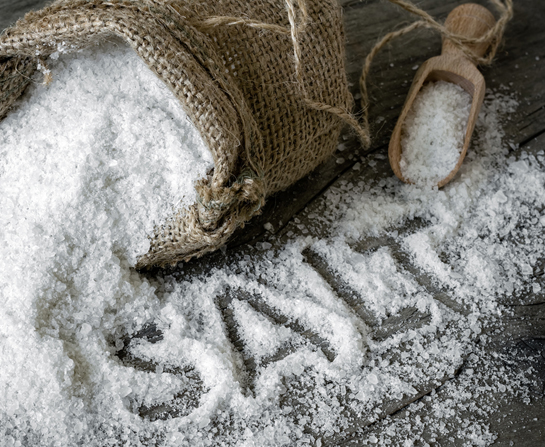Good Salt? Bad Salt?
May 2, 2022 Return

Most of us use salt to spice up cooking and make dishes tastier. There are various types of salts – table salt, sea salt, kosher salt, rock salt or fleur de sel (flower of salt) – you name it, the market has it.
Salt contains sodium. Our body does need sodium to function – to control blood pressure and blood volume, and ensure muscles and nerves work properly. Nevertheless, we only need a minute amount of sodium (500mg) every day. As sodium is present naturally in most foods, we do not really need extra salt to be added into our food. Some people, however, may find it really difficult to live with salt-free diets, despite being aware that excessive salt intake can cause high blood pressure and increase their risk of heart disease and stroke.
So, are you one of those people who just can’t resist salt, but at the same time, concerned about your health? Do not worry. What you can do is reduce the amount of salt as much as possible. Try limiting yourself to no more than one teaspoon of salt per day. One teaspoon equals to 5g of salt, which is equivalent to 2,000mg of sodium.
Cutting down on salt
Begin slowly, don’t push yourself too hard. Here are some practical tips that can help to reduce your craving for salt:
- Prepare your own stock and gravy instead of using flavour enhancers such as MSG (monosodium glutamate), sauces (soy sauce, oyster sauce and tomato sauce), and flavouring cubes or granules.
- Use natural herbs and condiments such as garlic, onion, curry spices, pepper, lemon grass, vinegar, lemon, ginger, chilli, cinnamon or turmeric.
- Consider sea vegetables (eg, seaweed) in cooking. Apart from giving a natural salty flavour, they are rich sources of minerals, and contain lignans, plant compounds with cancer-protective properties.
- Always check food labels and opt for low-sodium foods (<120mg sodium per serving). Compare with different brands and choose the ones with lower sodium content (this includes MSG and sodium nitrate).
- Choose fresh fruits or vegetables such as carrots or celery sticks as snacks.
- Limit processed foods (sausages, nuggets, meatballs and burgers) and highly salted foods (salted fish, salted eggs, salted vegetables and high-sodium snacks) and condiments.
- Soak preserved foods in water to reduce sodium content.
- Limit fast food and request for low salt, less sauces, or no MSG when eating out.
- Learn to enjoy the natural flavour of foods without salt. If you find this difficult, you may consider a low-sodium salt substitute, which contains lower sodium content (about less than half) than regular salt. Salt substitutes taste the same as regular salt, but are able to enhance your cooking while retaining the natural flavour of foods. Some salt substitutes also contain magnesium, potassium and iodine. Magnesium and potassium may help regulate blood pressure, while iodine prevents the development of thyroid disorders. However, if you have kidney or heart problems, you are advised to consult your doctor before trying out any salt substitutes.
If you like this article, do subscribe here.
